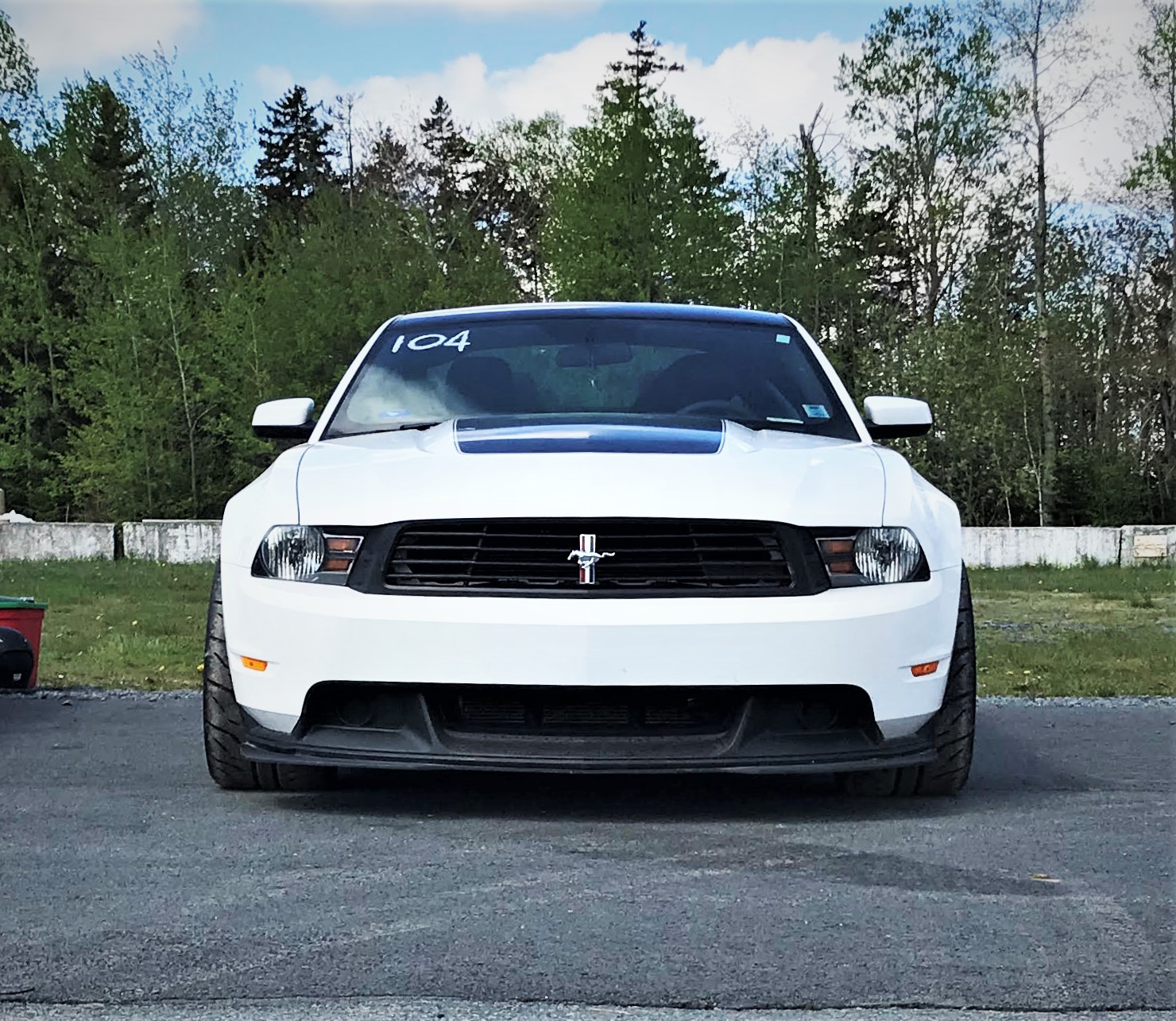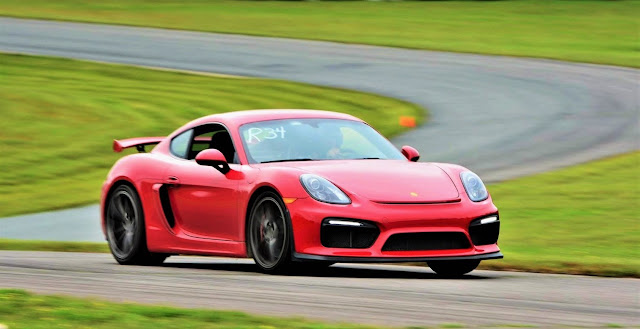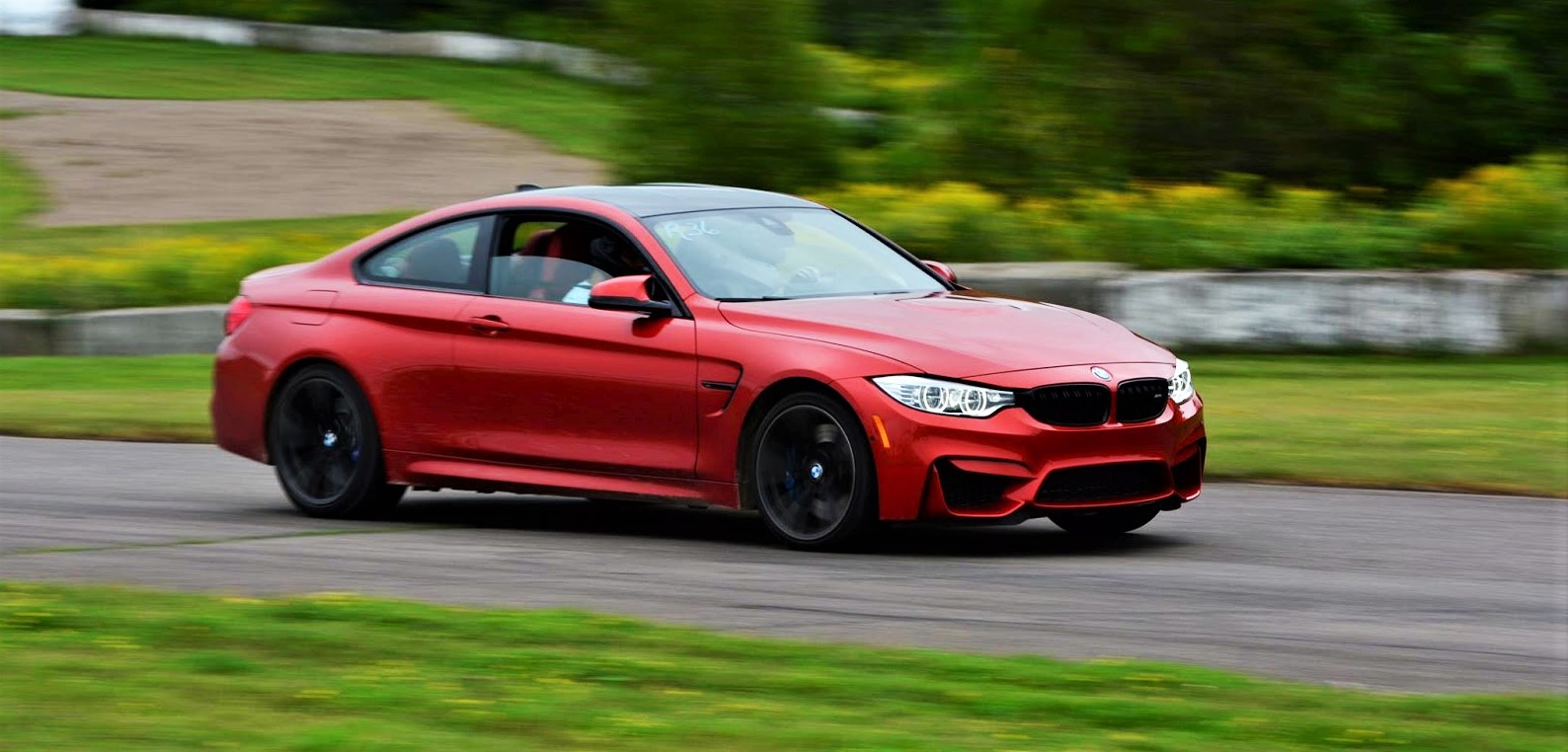"True, the Evo MR is an aged dog. Its equipment is antiquated." Who would have thought this would be how to describe an Evo? It has basically been unchanged since its introduction. In fact, the pictures posted here are from Mitsubishi's website. A link that takes you to a flickr Mitsubishi account where the pictures are titled 2008 Mitsubishi Lancer Evolution.
The Lancer Evolution has always been a performance bargain, offering performance that nothing in its budget did but, with a starting price that's as close as makes no difference $40,000 and no updates since its introduction, that's no longer the case. You can get Camaros, Mustangs and Challengers that are faster and quicker now. Many people now know that a Camaro SS 1LE or a Mustang GT Track Pack are hugely capable on a track and can easily beat an Evo but would struggle to believe that a Challenger would beat an Evo on the track but during Car and Driver Lightning Lap features, a 2011 Challenger SRT8 392 did a best lap of 3:09.4 while a 2011 Lancer Evo SE did a best of 3:10.6. You can get the same important suspension and drivetrain bits in a Challenger R/T now with the Scat Pack without the luxury features and it starts just under $40,000.
Some would say the Evo is a couple of bolt ons and a tune away from having enough power to pull away and they would be right. But the Challenger is a big soft GT at heart and I would fully expect a set of stiffer springs and dampers that make it anywhere near as stiff as an Evo plus wider wheels and tires to match the newfound poise to easily extend that lead. I do know that Evos have immense potential when fully built with enough power to take advantage of the available grip due to the AWD system but that's more effort, time and money than most people want to put into their cars.
If domestics aren't your cup of tea, you can go for a Golf R, which would be far, far more refined and comfortable, you would think you were in a Mercedes S-Class if you sit in one right after you jump out of an Evo. If you don't mind spending a few grand more and step in the mid $40k's territory, you could get a lightly optioned M235i or an S3. The same applies to a 335i, although to get a 335i close to that price range, you would have to leave all the option boxes unchecked and you would probably be hard pressed to find such an example on a dealer lot. Still, it shows you what's available in that price range. You could also give up some performance for luxury and get a well optioned A4 or 328i or step back into domestic territory and get a Chevy SS or a Charger SRT8. Much, much more car for the money and a lot more performance.
If domestics aren't your cup of tea, you can go for a Golf R, which would be far, far more refined and comfortable, you would think you were in a Mercedes S-Class if you sit in one right after you jump out of an Evo. If you don't mind spending a few grand more and step in the mid $40k's territory, you could get a lightly optioned M235i or an S3. The same applies to a 335i, although to get a 335i close to that price range, you would have to leave all the option boxes unchecked and you would probably be hard pressed to find such an example on a dealer lot. Still, it shows you what's available in that price range. You could also give up some performance for luxury and get a well optioned A4 or 328i or step back into domestic territory and get a Chevy SS or a Charger SRT8. Much, much more car for the money and a lot more performance.
I will admit, when you stop looking at numbers and only consider the experience, it will be very different for the Evo compared to any of the other cars mentioned above. The little mechanical noises and lack of comfort that all the others lack will make you hate it on a long trip but feel a lot more "raw" when you start pushing it. And save for maybe the SS 1LE, the Mustang GT and the M235i, the Evo will feel much more agile and direct. Of course, there's also something the Evo can't give you which is the RWD driving dynamics. I've driven a new Evo GSR a few years ago and I had a lot of respect for it and what it can do but the AWD system, while very impressive, made the driving experience feel lacking anywhere short of a track. I came away very impressed but not in love.
After looking at the numbers, though, one thing becomes clear. The traction of the AWD system in the Evo is unmatched. Except for the Golf R and the Audi S3, all the cars below have been proven to be faster than the Evo around VIR during Car and Driver testing. The new Mustang hasn't participated in a Lightning Lap yet but the S197 Mustang GT Brembo was quicker than the Evo. The S197 Track Pack was quicker than that around a track and the new S550 Mustang GT Track Pack is even quicker. The Challenger R/T Scat Pack should be at least as quick as a 2011 SRT8 392 since it gets the same running gear and should be slightly lighter without the luxury features. Yet, their average g numbers in the MT figure-eight test are far behind the Evo despite being close in terms of time and the Camaro actually matching it. The secret? Traction, I think.
As the cars go around the figure eight, there's turning as you go through the number eight "top" and "bottom" curves, there's acceleration as you exit these turns and there's braking as you approach them. All the acceleration, braking and turning g forces contribute to the overall average g. All the cars are very comparable in terms of braking and lateral grip, with the Camaro actually being much better on the brakes. The three muscle cars are far ahead in terms of acceleration and the BMW, Golf and the Subaru are still significantly faster. These cars couldn't have lost that much in the "straight" sections in the figure eight, the braking going in the turns or going through the turns. The only possible section where the Evo could make that big a difference is corner exit; being able to distribute as much power as possible to the wheels with the most grip. This confirms the potential of Evos with a lot of power I was referring to earlier.
| Test | Ford Mustang GT Track Pack | Chevy Camaro SS 1LE |
|---|---|---|
| 0-60 mph | 4.4 | 4.4 |
| 1/4 mile | 12.8 sec @ 112.2 mph | 12.9 sec @ 110.5 mph |
| 60-0 mph braking | 107 ft | 99 ft |
| Lateral g-force | 0.96 | 0.98 |
| MT figure-eight | 24.7 sec @ 0.84 g | 24.5 sec @ 0.87 g |
| Starting price (USD) | $35,420 | $38,000 |
| Difference (USD) | -$4,385 | -$1,805 |
| Test | Dodge Challenger R/T Scat Pack | BMW M235i |
|---|---|---|
| 0-60 mph | 4.2 sec | 4.4 sec |
| 1/4 mile | 12.6 sec @ 112.3 | 13.0 sec @ 106.6 mph |
| 60-0 mph braking | 108 ft | 103 ft |
| Lateral g-force | 0.89 g | 0.97g |
| MT figure-eight | 25.5 sec @ 0.81 g | 24.9 sec @ 0.78 g |
| Starting price (USD) | $39,490 | $44,025 |
| Difference (USD) | -$315 | $4,220 |
| Test | Audi S3 | Mitsubishi Lancer Evo X MR |
|---|---|---|
| 0-60 mph | 4.7 sec | 5.1 sec |
| 1/4 mile | 13.4 sec @ 102.4 mph | 13.8 sec @ 99.7 mph |
| 60-0 mph braking | 113 ft | 105 ft |
| Lateral g-force | 0.92 g | 0.98 g |
| MT figure-eight | 25.2 sec @ 0.81 g | 24.5 sec @ 0.94 g |
| Starting price (USD) | $41,995 | $39,805 |
| Difference (USD) | $2,190 | $0 |
| Test | VW Golf R | Subaru WRX STi |
|---|---|---|
| 0-60 mph | 4.5 sec | 4.6 sec |
| 1/4 mile | 13.1 sec @ 104.9 mph | 13.1 sec @ 104.4 mph |
| 60-0 mph braking | 108 ft | 108 ft |
| Lateral g-force | 0.94 g | 0.97 g |
| MT figure-eight | 24.9 sec @ 0.85 g | 24.9 sec @ 0.79 g |
| Starting price (USD) | $37,415 | $38,190 |
| Difference (USD) | -$2,390 | -$1,615 |
To be fair, the Evo does come cheaper and with a manual (better in my opinion) in the GSR trim but it would be slower because of less aggressive shocks and springs and the slower transmission. At the end of the day, though, I don't think the Evo's AWD grip is enough to bring more than very few new fans to the Evo in its final year of production. The power advantage of the Mustang, Challenger, Camaro and M235i have shown to be more than enough to make up for the traction advantage. I am really surprised to see the Evo die this way, as I thought it would always be a tough competitor in the segment. With a lacklustre lineup, Mitsubishi's future in North America is questionable and so is the Evo's rumoured hybrid replacement. Unless you're a diehard fan, you probably will decide that you can get much more for your money if you decide on any of the cars above. In the case of the of Mustang, you'll save a good chunk of change and end up with a manual V8 RWD car. I know what my choice would be.
Notes: Prices include Distination. Difference in price is compared to the Evo MR. Tests are on different days, so the numbers may be slightly different in relation when tested on the same day.















Comments
Post a Comment